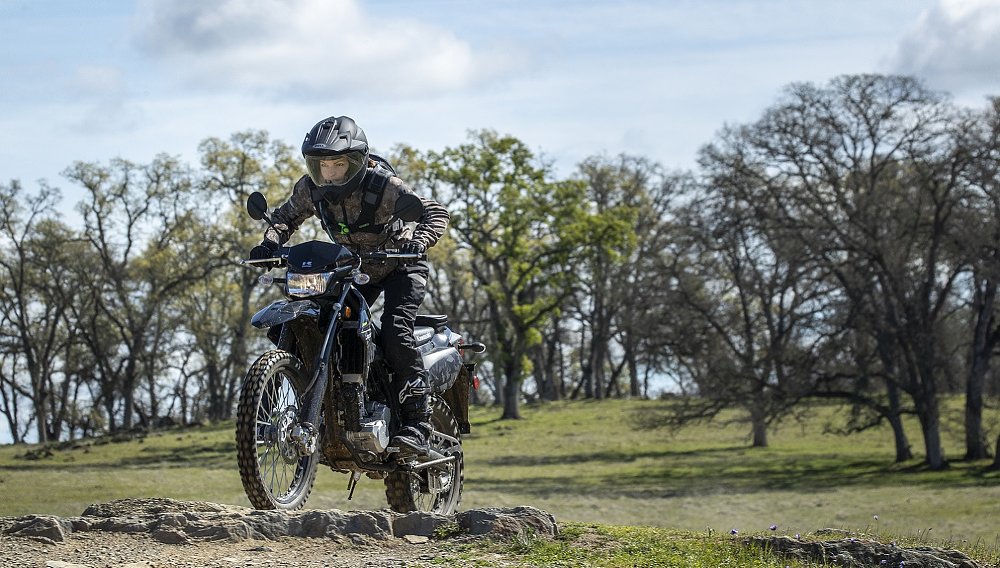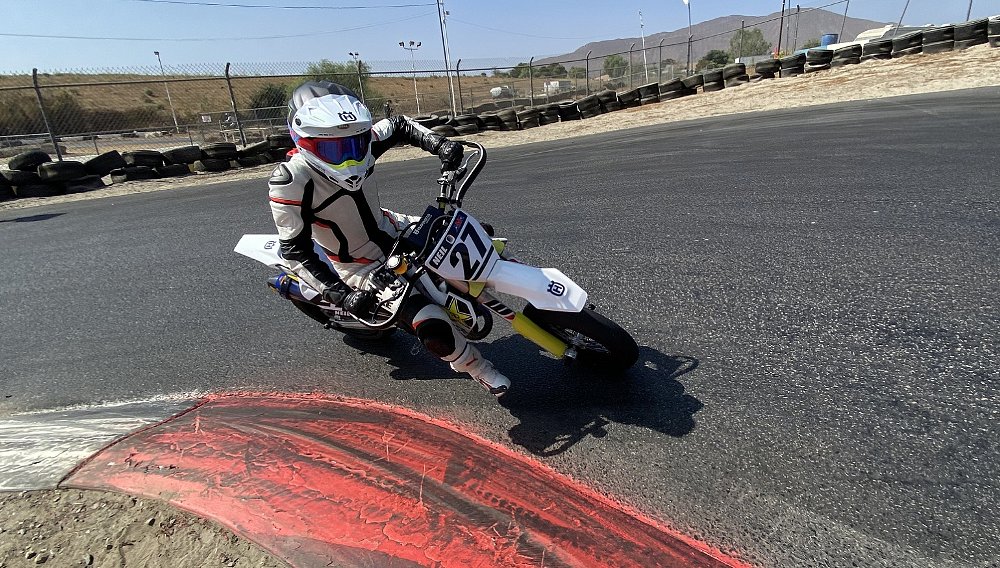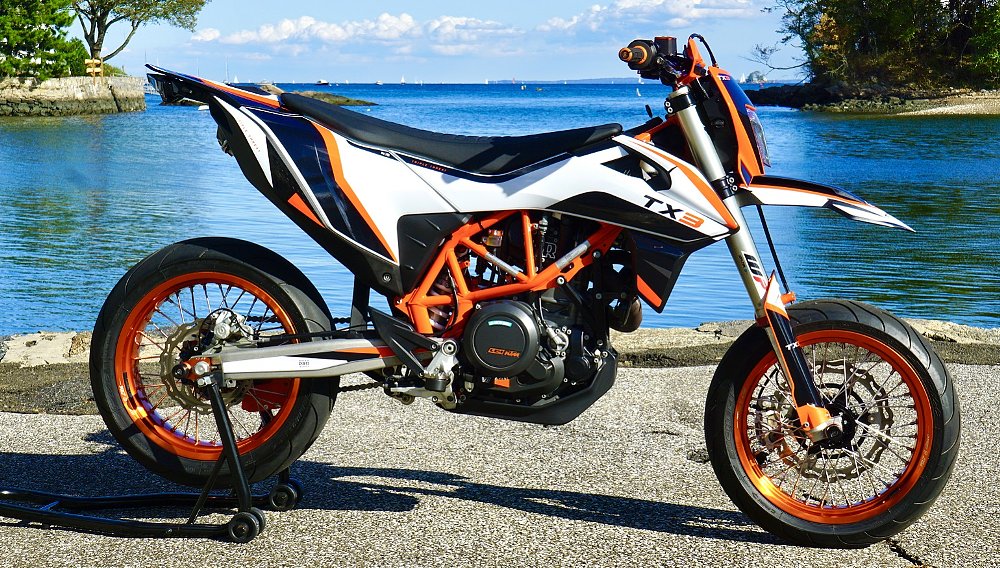In the mid-2000s, the supermoto scene was enjoying its heyday in the USA. Racing greats like Jeremy McGrath, Ben Bostrom and Kevin Schwantz all graced the starting grid of the national AMA Supermoto series. Race fans were treated to a battle between pro road racers and motocross riders on one-of-a-kind venues built into city streets and tracks alike.
Though the golden years of this race discipline quickly waned, there remain resilient pockets of supermoto enthusiasts, from new street riders to track enthusiasts who keep the hybrid sport alive. More than a decade after the KLX250SF was quietly shuffled out of the Kawasaki model lineup, the KLX300SM marks a supermoto comeback for the big green OEM. The move surprised many — why a supermoto, and why now? These questions circulated inside my helmet as I rode the KLX300SM at the official press launch in Folsom, California. On the city streets and at the kart track, the answers revealed themselves one by one.
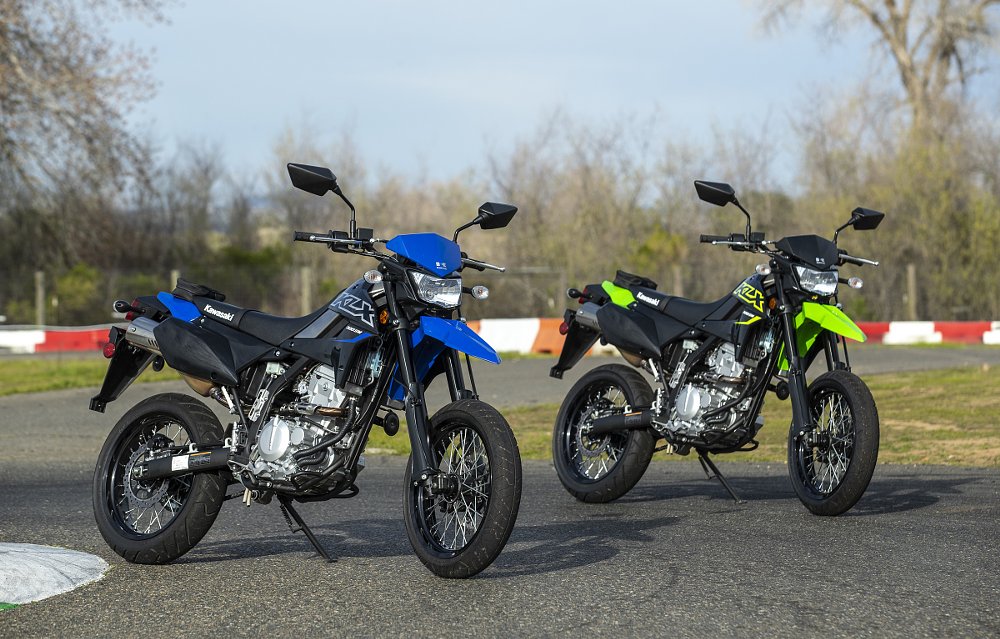
Sibling rivalry — the KLX300SM versus KLX300
After spending the entire previous day riding in the dirt on the KLX300, top of the order for me was to discern the differences between the two models. The 17-inch front and rear wheels shod with street-dedicated tires are an immediate standout, compared to its dirt-oriented sibling. Next to come into focus are some nuanced styling cues, such as a shorter front fender and angular mirrors that more closely resemble Kawasaki's street lineup.
What else caught my eye immediately was the enlarged 300 mm semi-floating front disc brake, another identifiable visual cue that the KLX300SM is ready for some aggressive fun on asphalt and an upgrade from the 250 mm on the KLX300. Less obvious from afar, but very noticeable when I was in the saddle, was the shorter seat height result from the street-specific suspension settings. The KLX300SM has a seat height of 33.9 inches, compared to the KLX300 at 35.2 inches. This meant at five feet, four inches tall with an inseam of 31 inches, I was able to touch the balls of my feet on the ground comfortably on the SM version. Climbing on board and grabbing hold of the hand grips, I also became aware of the narrower handlebar, which lends itself to sharper inputs that street and track riding might demand.
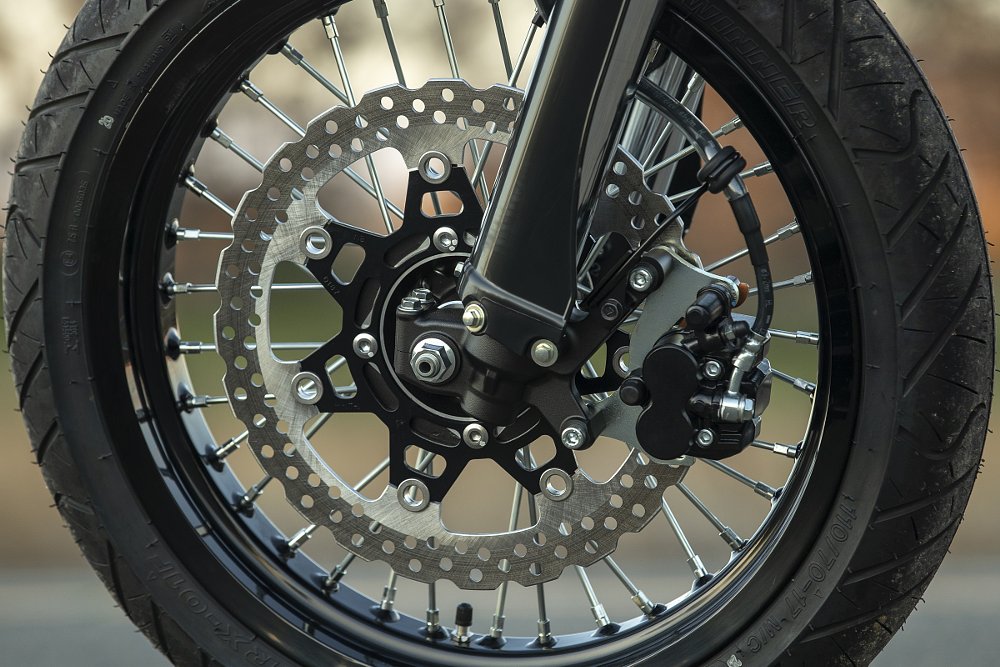
Kawasaki also wisely adjusted the gearing ratio on the KLX300SM — a 14/37 combination versus the KLX300's 14/40 to better tackle the higher top speeds expected of a street-dedicated machine. The other separators between the two models become minutiae and only really noticeable in a line-by-line comparison of the spec sheet. Otherwise, the KLX300 and KLX300SM share the same motor, frame, and chassis.
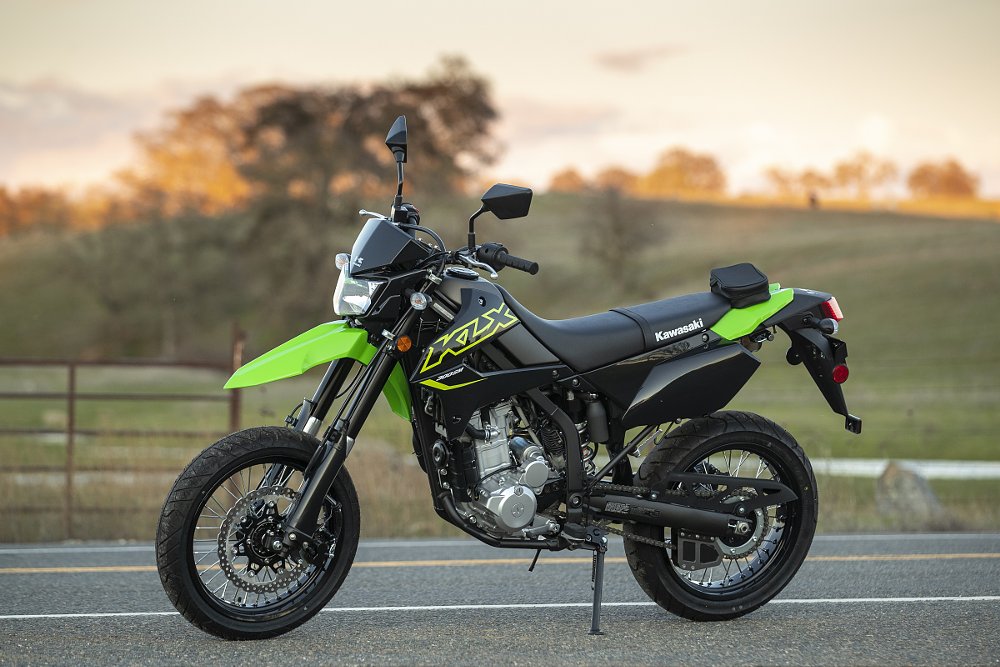
With the side-by-side assessment completed, it was time to take to the streets to see just how much of a measurable effect these component changes would make while riding the KLX300SM.
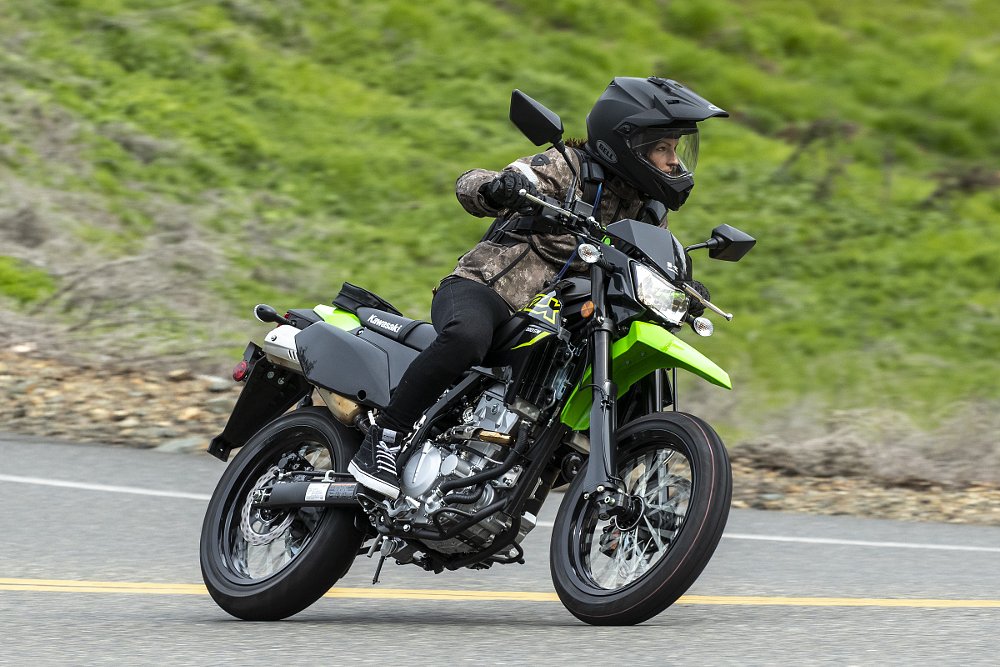
Tailored for the street
So allow me to state the obvious here: The KLX300SM is naturally a better option over the KLX300 for street-focused riders. However, what surprised me was the extent to which that was be true. While I had few gripes riding the KLX300 on the street the day before, the KLX300SM really smoothed out any of those kinks I identified. In the city, the KLX300SM was easy to stop with the added braking power and easier to manage at stoplights with the shorter seat height. On the freeway, a number of changes contributed to a much more comfortable ride. The taller gearing leant itself well to faster freeway speeds, the rubberized footpegs reduced the already minimal buzziness, and the 292 cc motor ate up the highway miles with no protests. The trifecta of street tires, firmer suspension and upgraded front brake made a world of a difference on the tight and twisty back roads where I had felt bit timid on the KLX300.
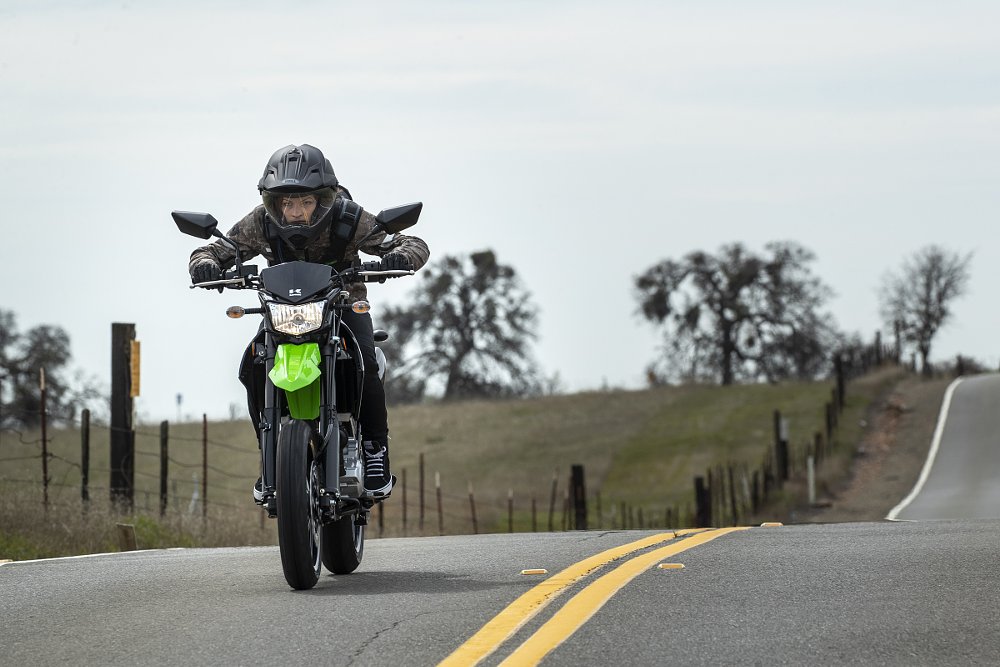
No “flighty” sensations here like on the KLX300. The KLX300SM entered the corners with excellent grip and the suspension at mid-corner remained planted, while throttling out was smooth with no “pogo stick” sensations that can be typical in entry-level supermoto machines. The KLX300SM was more than capable of anything our street test ride threw at it. The only things holding it back from being a top contender for commuters is the two-gallon fuel tank for range, lack of storage solutions, no ABS system, and a lack of wind protection for long stints at top speeds.
The KLX300SM proved a worthy road companion, but what about the rigors of a go-kart track? I am so glad you asked.
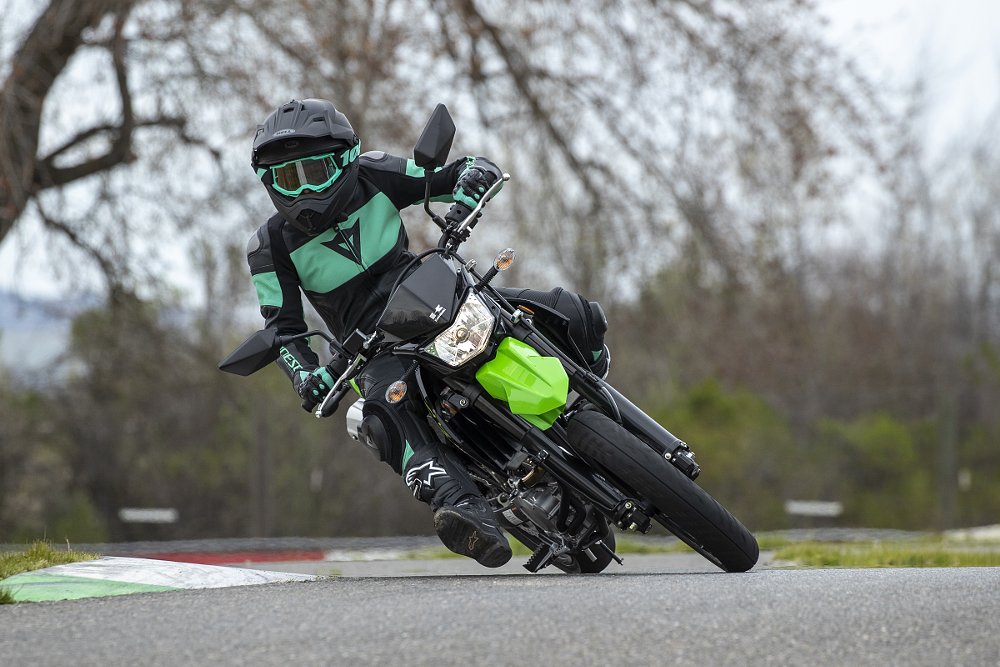
Slaying the kart track
After our morning ride on the street, we rolled up to the Prairie City Kart Track and our appetite for corner shredding went into maximum overdrive. The kart track was absolutely picturesque with natural elevation hugged by ribbons of asphalt and framed by lush green grass. This proving ground was going to set the stage for rider and machine to find their limits in the funnest way possible.
When it comes to acceleration on the track, the KLX300SM puts down the power with surprising effectiveness out of corners and also makes good on the straightaways, given its size. I’m not saying it has the bark of the 450 cc-and-up supermoto-race-replica club, but it also doesn't have the high price tags and demanding maintenance schedules of those bikes, either. In the end, the pep of this little motor exceeded my expectations.
In the hard-braking scenarios of the kart track, the 300 mm front disc was utilized to its full potential. As the day wore on, I experimented with some trail braking into the tighter corners and found the brakes to be smooth and progressive and that resulted in some real lap-time savings when used with a foot-out approach.
It’s not all in the brakes though, a well sorted suspension and chassis contribute to the KLX300SM's handling capabilities on track. A shorter wheelbase and tweaks to the rake and trail all resulted in sharp response to steering inputs for cornering.
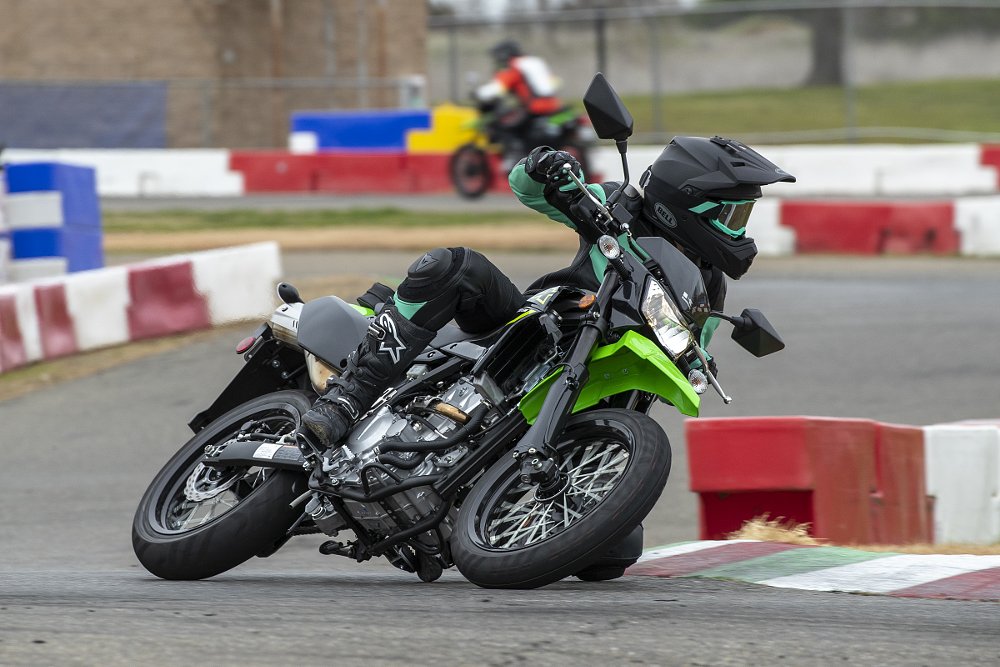
I did not experience any excessive dive in the front fork on hard braking nor any jarring rebounds on brake release and the suspension remained solid mid-corner. Whether I was foot-out or knee-down, the KLX300SM provided great feedback and performance while handling under pressure. While the SM isn’t a top-tier supermoto race machine with all the bells and whistles, it still got my heart racing and begging for more as they dragged us off the track at closing time.
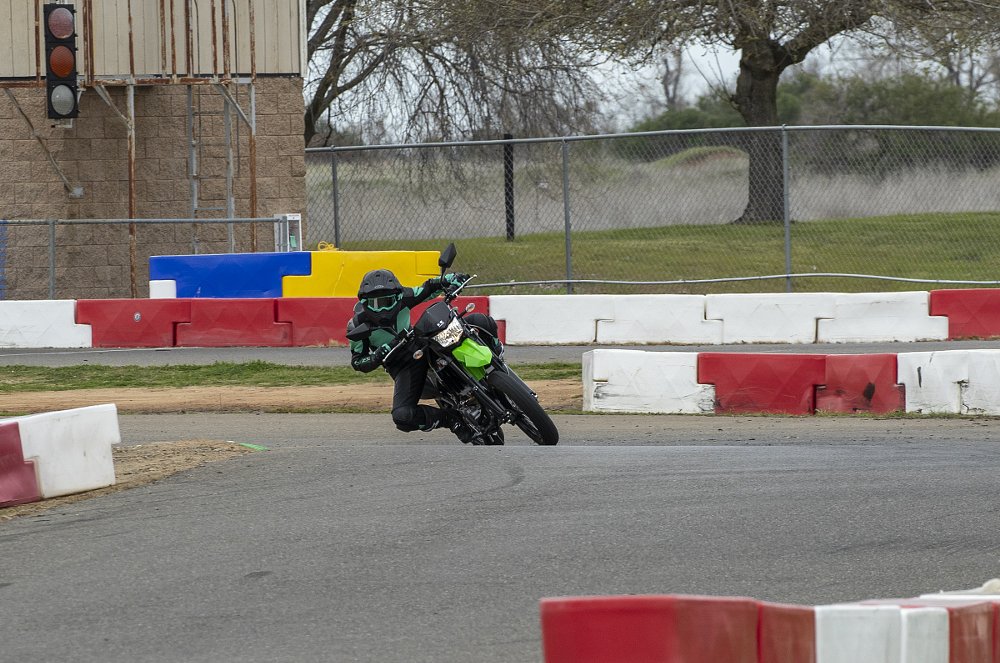
A supermoto comeback
After a knee-dragging, foot-dangling heck of a good time circulating the kart track all afternoon, it was time to circle back to the original pressing question: Why a supermoto, and why now? I can’t speak for Kawasaki, but my general musings on the entry-level market may help connect some dots here. It is well known that the lightweight street category for 250 cc to 300 cc motorcycles continues to boom and in my observations it is a segment over-saturated by sport bike and naked bike offerings. A supermoto in this particular category is curiously absent, and a niche begging to be addressed.
It’s also my humble opinion that the supermoto platform is a fantastic starter bike for new riders as it is extremely lightweight and capable in a variety of environments. Not to mention that any riders out there looking for a motorcycle that can handle a simple commute and deliver some track-time thrills at a thriftier budget would be well served by the KLX300SM on both counts. The gate fees for railing at a go-kart track compared to the investment required to attend a trackday at a full-sized circuit on a costlier sport bike are considerably less taxing on the wallet.
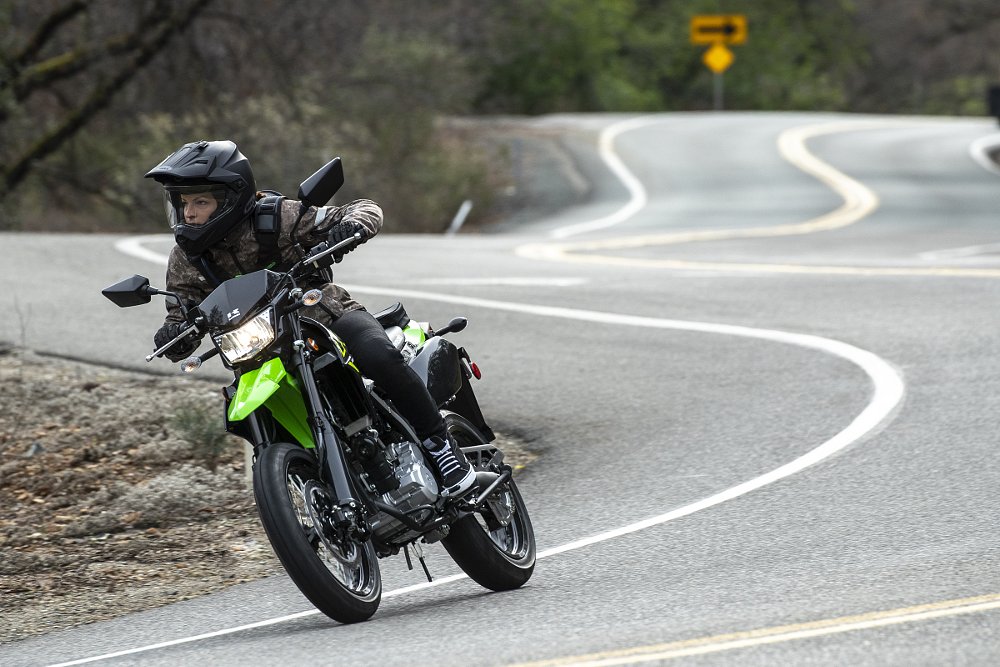
While we are on the topic of budget, let’s talk dollars and cents — the KLX300SM cashes in at $5,999. That is about half of the asking price of the purebred competition-focused supermotos imported from Europe, and an impressive few thousand dollars cheaper than its closest lightweight competitor in the street-legal supermoto category. At that price point, the KLX300SM is well positioned to upset some of the long-term players in the supermoto market and delight new and returning riders to the sport.
Is this the start of a supermoto renaissance in America? Never say never.
| 2021 Kawasaki KLX300SM | |
|---|---|
| Price (MSRP) | $5,999 |
| Engine | 292 cc, liquid-cooled, four-valve single |
|
Transmission, final drive |
Six-speed, chain |
| Claimed horsepower | NA |
| Claimed torque | NA |
| Frame | Steel perimeter |
| Front suspension | 43 mm inverted cartridge fork, 16-way adjustable for compression damping; 9.1 inches of travel |
| Rear suspension | Single shock, adjustable for preload, 20-way compression and 30-way rebound damping; 8.1 inches of travel |
| Front brake | Single Nissin two-piston caliper, 300 mm disc |
| Rear brake | Single-piston caliper, 240 mm disc |
| Rake, trail | 25 degrees, 2.8 inches |
| Wheelbase | 56.5 inches |
| Seat height | 33.9 inches |
| Fuel capacity | 2.0 gallons |
| Tires | IRC Road Winner, 110/70-17 front, 130/70-17 rear |
| Claimed weight | 304 pounds wet |
| Available | Now |
| Warranty | 12 months |
| More info | kawasaki.com |











